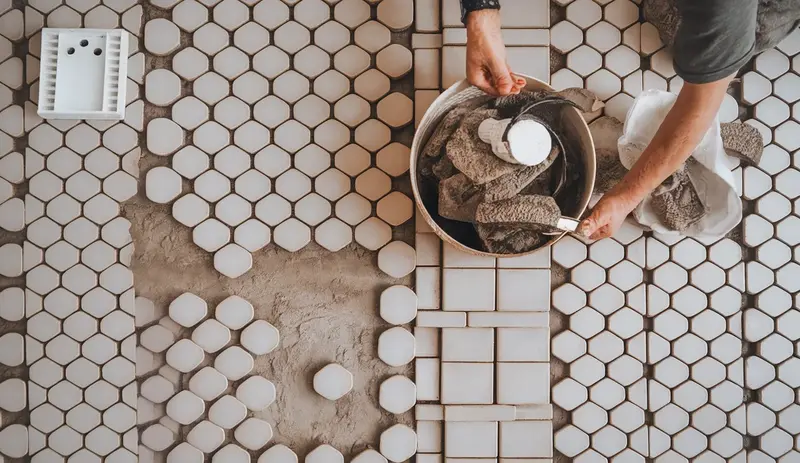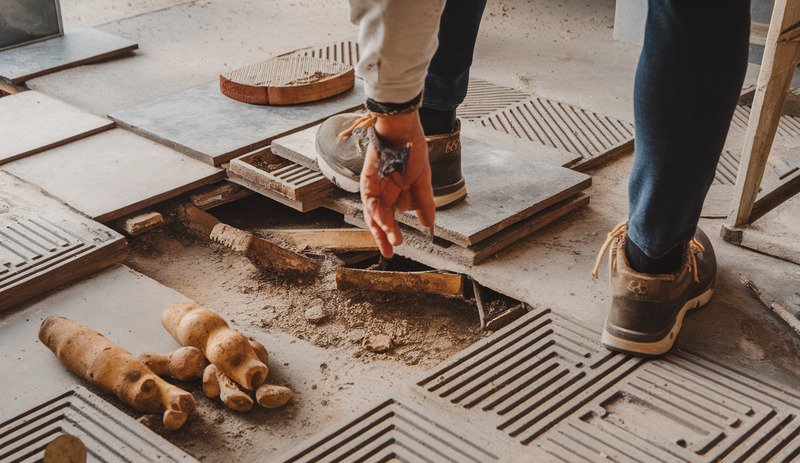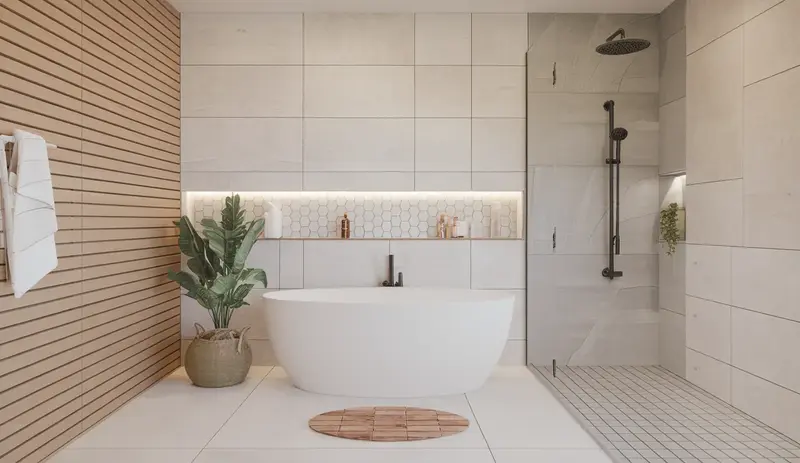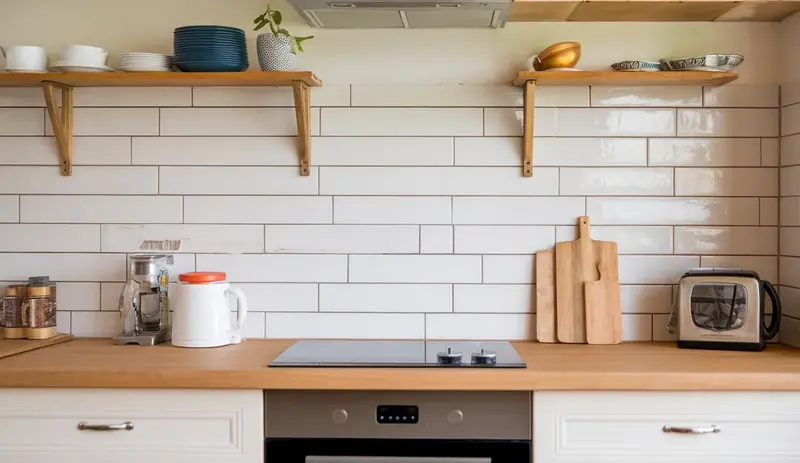Are you dreaming of sleek, modern large format tiles in your charming older home? This guide will walk you through everything you need to know about transforming your space while addressing potential structural challenges.
Understanding Large Format Tiles: What Makes Them Different?
Tiles in large formats, usually measuring 12×24 inches or larger, have taken the design world by storm. I’ve worked on countless home renovation projects, and I can say with authority that these oversized tiles can transform a space.
They aren’t a passing trend; they’re a game changer in modern interior design. The appeal is clear: having fewer grout lines, a more seamlessly-designed space, and a level of spaciousness that almost makes you forget how small some of these older rooms really are.
But here’s the rub—these same features that make contemporary large format tiles so appealing in new construction can present some unique challenges when you’re trying to achieve that same sleek look in an older home, especially in areas like Plano, Texas.
Structural Challenges in Older Homes
Homes that are older are beautiful, but they come with their own traits—and sometimes, those traits include some unusual structural details. It’s pretty normal for homes built many years ago to have subfloor problems.
We’re talking about surfaces that are not level, spots that might be weak for one reason or another, and structural soundness that could be iffy when it comes to large format tiles. If you’re looking for professional advice, check out Star Tile and Surfaces for expert guidance.
Pro tip: This isn’t something to take lightly. Serious (and expensive) problems can develop later if the structure isn’t correct. If you’re seeing large amounts of unevenness or feeling any give in your floor, it could be time to call in a professional for a thorough assessment.
Preparing Your Older Home for Large Format Tiles
Prior to commencing the dream phase concerning your forthcoming tile floor, a thorough evaluation must be conducted. This entails:
- Verifying that the subfloor is level
- Pinpointing any frail sections of the structure
- Deciding on the proper reinforcements to use
During my time spent in renovating homes, I’ve discovered that the biggest factor in determining whether or not a tile installation is successful is the preparation. More often than not, this means using some combination of the following:
- Underlayment or Reinforced Subfloor: If your floor is not completely level, these layers are needed to make it so.
- Thinset Mortar: This is what you use to stick the tile to the floor.
- Tile: The last layer of the assembly is the tile itself.
You May Be Interested In: How to Choose the Right Tile Size for Small Bathrooms?
Key Factors to Consider Before Installation
Being flat is critical. When it comes to large format tiles, even the tiniest deviation from flat can lead to disaster—that is, cracking or an uneven surface. Most manufacturers recommend a flatness tolerance of 1/8 inch over a 10-foot span.
Another weighty issue is the consideration of weight. Large format tiles are just that: large and heavy. If your home is an older one, you might need to beef up the support under the new tile just to be on the safe side, or your floors might sag after a few years.
Moisture can easily equal disaster when it comes to large format tiles. Humidity—even in homes built only a couple of decades ago—can cause the types of problems we associate with our grandparents’ homes.
Installation Techniques for Older Homes
Installing large format tiles is an art. One needs to:
- Utilize specialized adhesives
- Reduce grout lines to the barest minimum
- Use certain techniques that are specific to laying large format tiles
A professional tip? Slightly uneven surfaces can be compensated for with very narrow grout lines. On the other hand, working with these tools and techniques can be a little tough. You need to be careful to get it just right.
Common Mistakes to Avoid
I have observed some very expensive mistakes made by homeowners. The enormous, glaring indications that a homeowner has made a disastrously poor choice include:
- Not doing an adequate job of preparing the subfloor
- Using the wrong adhesive
- Not paying attention to the recommended installation guidelines
- Trying to tackle a difficult installation when they are not sufficient at DIY projects
Cost Considerations and Budgeting
Home Depot states that the cost to install large format tile can vary widely, from $10 to $30 per square foot, based on how tricky the job is. If your house dates back a ways, also consider that we could end up needing to do some extra prep work.
Last advice: If you’re not 100% certain, it’s perfectly fine to reach out to an expert. At times, hiring an expert can save you loads of money in repair costs.
Final Words
Large format tiles can be a beautiful addition to older homes with careful planning, professional guidance, and thorough preparation. By understanding the challenges and taking necessary precautions, you can successfully transform your space with stunning, modern tiles.





